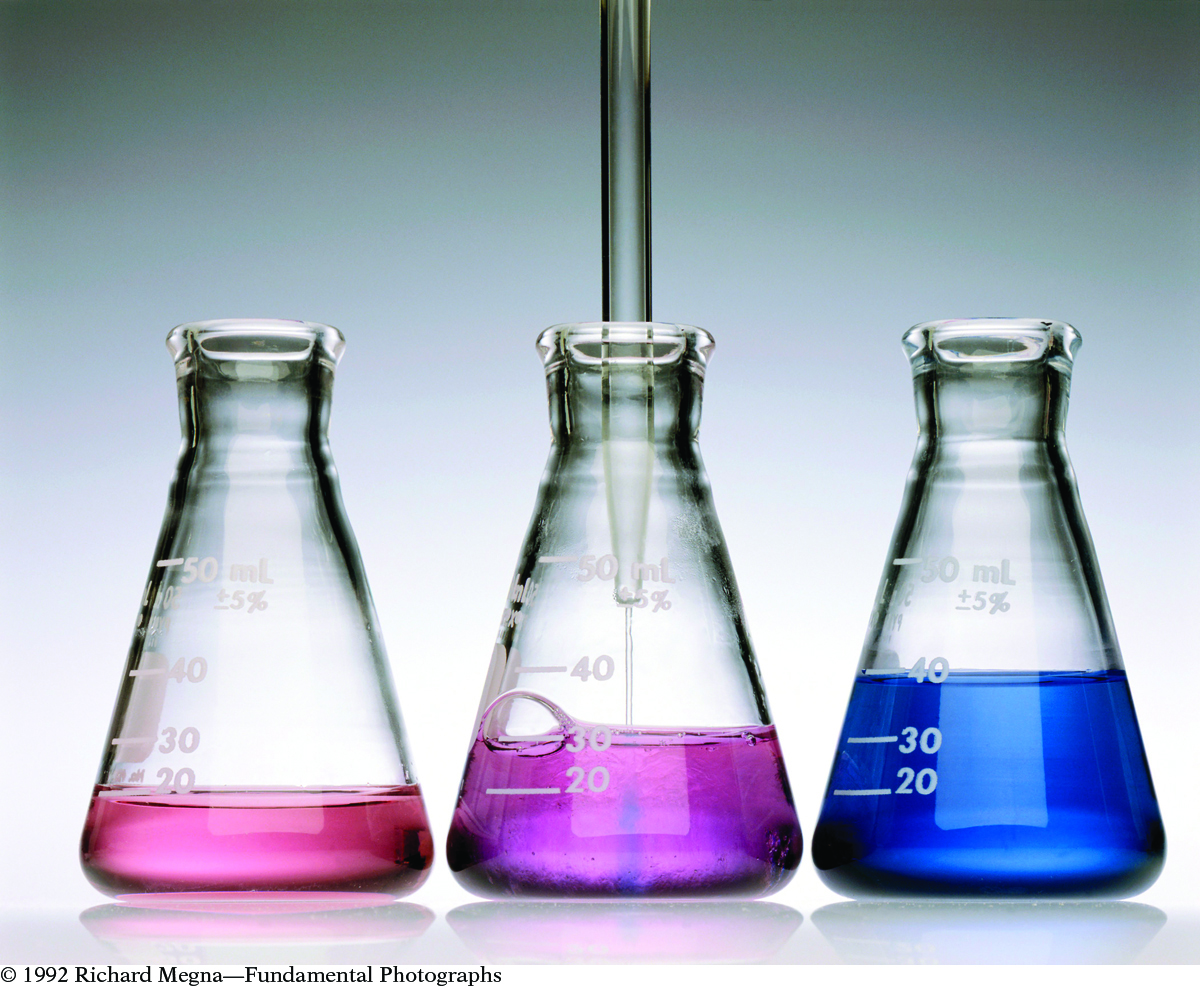Chapter 24 Summary

CHAPTER 24
Changing Conditions
SUMMARY
KEY TERMS
Le Châtelier’s principle
Showtime Update
Le Châtelier’s principle states that when conditions change for an equilibrium mixture, the amounts of starting substances and products will adjust to reduce the effect of the change.
If you add more of a starting substance to an equilibrium mixture, the amounts will shift in the direction of forming products. If you remove a starting substance from an equilibrium mixture, the amounts will shift in the direction of forming more starting substances. The same is true for adding or removing products.
Changing temperature is another way to place a stress on an equilibrium mixture. If the process is exothermic, heating will shift the amounts in the direction of forming starting substances. For an endothermic process, heating will shift the amounts in the direction of forming products.
For equilibrium mixtures with starting substances and products that are gases, changes in volume that cause changes in pressure place a stress on the system at equilibrium. If the pressure increases, a change will occur in the direction that decreases the total number of moles of gas to reduce the pressure.
REVIEW EXERCISES
Question 24.1
1. The indicator called litmus, HIn, is red in acidic solution and blue in basic solution.
Write a chemical equation to describe the equilibrium mixture.
What color is In−? Explain how you know.
What happens if you add acid to a red solution of litmus?
What happens if you add base to a red solution of litmus?
Draw a particle view of a purple litmus solution.
Question 24.2
2. Hydrofluoric acid, HF, is a weak acid with K = 6.3 × 10−4. The chemical equation below describes the dissociation of HF in water:
HF(aq) ⇋ H+(aq) + F−(aq)
Write the equilibrium-constant equation for the dissociation of HF.
At equilibrium, is [H+] greater than, less than, or equal to [F−]? Explain your answer.
At equilibrium, is [H+] greater than, less than, or equal to [HF]? Explain your answer.
How does [HF] change if H+ is added to the equilibrium mixture?
Question 24.3
3. The dissolution of calcium chloride, CaCl2, in water is used to create hot packs for foot and hand warmers. The chemical equation below describes a saturated solution.
CaCl2(s) ⇋ Ca2+(aq) + 2Cl−(aq)
Describe what is meant by a saturated solution. How do you know the solution is saturated?
Page 655Describe what happens if you add more Ca2+ to a saturated solution.
Describe what happens if you add more Cl− to a saturated solution.
Describe what happens if you raise the temperature.
Describe what happens if you lower the temperature.
Question 24.4
4. Nitrogen, N2, and oxygen, O2, react in a car engine to produce nitric oxide, NO, as described by the chemical equation given below:
N2(g) + O2(g) ⇋ 2NO(g)
In an engine at 1800 ºC, K = 1.0 × 10−4. Write the equilibrium-constant equation for this reaction at 1800 ºC.
Are the starting substances or products favored in an equilibrium mixture at 1800 ºC? Explain your thinking.
If you drive the car to a mountaintop where the concentration of oxygen is much lower, will there be more or less NO in the equilibrium mixture? Explain your thinking.
At 25 ºC, K = 1.0 × 10−31. Write the equilibrium constant equation for this reaction at 25 ºC.
Do you expect to find much NO in the atmosphere due to the reaction of N2 and O2 at 25 ºC? Why or why not?
Given that the value of K is much smaller at lower temperatures, is the reaction exothermic or endothermic?
If the volume of the container with the equilibrium mixture is expanded, do you expect a change in the equilibrium mixture? Why or why not?
Question 24.5
5. Suppose this chemical reaction is in a state of dynamic equilibrium in a sealed container:
COCl2(g) ⇋ CO(g) + Cl2(g) K = 4.63 × 10−3
Write the equilibrium-constant equation for this reaction.
At equilibrium, what would [COCl2] be if [Cl2] = [CO] = 2.0 × 10−2 M?
In which direction would the equilibrium shift if some additional CO were added to the system? Explain why.
Suppose that the CO added in part c brought [COCl2] to 4.0 M at equilibrium. What would [Cl2] and [CO] be?